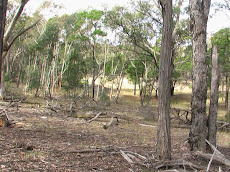
Hi everyone
After promising a few photos of my pottery I finaly got around to snapping some photos today!!! Of course if I took photos of every pot and plate I have made it would be so boring so I have tried to keep it to techniques and a few styles.....
Japanese papers - I know this looks as though I sat with a paint brush forever detailing in blue or black - but actually this is Japanese transfer paper. What you do is apply it to a pot which is ready to bisque fire, so it is raw. The papers come in A3 sheets and you apply the paper but dampening the pot with a sponge then section by section placing the paper onto the pot with the damp sponge. It does take a fair bit of practice!

From trial and error though - you must remove the paper once it is dry because other wise it makes a mess of other pots in the kiln - and no one is happy! The print stays on the pot. Also, with a bisque firing people do tend to place pots inside each other - this can't happen with these pots - as we found out - what a mess!!! Anyway we have all learnt the hard way and now have much more success.

I rather like the pot above as I didn't glaze the inside after the bisque firing, just the inside so it can be used to hold liquid and it won't stain.


Phil is the Bonsai King of this family, me I just make the pots and collect the little figures - like this great boat with the man finishing out the front and his wife doing the washing out the back. This boat cost me $20 and for the work in it I was happy to pay that amount it was so worth it!!!!

 This is a set of bowls I made for my brother for Christmas. They nest inside each other and get lots of use. We have several here as well and cook with them all the time. Jess and Matt also use theirs and the nice thing about pottery in comparison to ceramics is it takes a lot more wear and tear so they last longer. I love this glaze - as the iron in the clay reacts with the glaze the red can be seen through the creamy base of the glaze - it is one of my favourite glazes to use on Walkers 5A Dark clay.
This is a set of bowls I made for my brother for Christmas. They nest inside each other and get lots of use. We have several here as well and cook with them all the time. Jess and Matt also use theirs and the nice thing about pottery in comparison to ceramics is it takes a lot more wear and tear so they last longer. I love this glaze - as the iron in the clay reacts with the glaze the red can be seen through the creamy base of the glaze - it is one of my favourite glazes to use on Walkers 5A Dark clay. For something completely different - here is a latte set. The cup and saucer are really rustic and don't have handles on the cups. I love the way these work and comments about them are really positive........
For something completely different - here is a latte set. The cup and saucer are really rustic and don't have handles on the cups. I love the way these work and comments about them are really positive........
A view from above. These would also be really cool as a herbal tea set as well. I am definitely thinking that I might make more of these for friends at Xmas. I love the fern effect, but will think about some other designs as well - although I think the imprinted fern goes really well with the clay. Walkers copper rust is the glaze (but I am not too keen on the colour - I am still trying to find a green that works well on this clay).
Thanks for looking everyone,
Have a wonderful day wherever you are
Carol


























